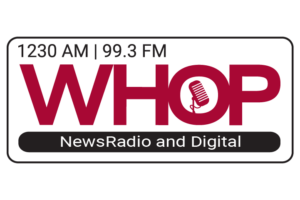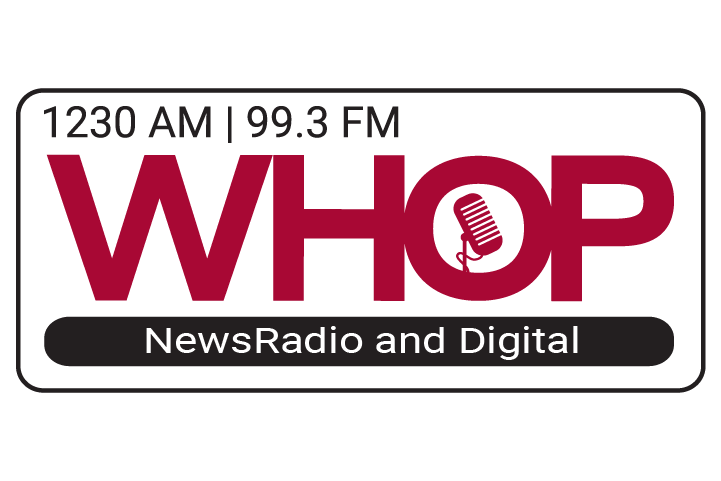The Christian County Health Department is asking for the community’s help to slow the spread of COVID-19 as medical facilities and emergency personnel are being strained by increasing case counts.
In an email to local media Wednesday morning, Amanda Sweeney with the health department notes Christian County has been red on the state incidence rate map for most of the last several weeks and that Monday featured a record single-day total of 69 new cases.
Sweeney says the “increase in numbers is putting a strain on our healthcare system, especially Jennie Stuart Health, the Christian County Health Department, and Hopkinsville Fire and EMS.”
She says contact tracing has become increasingly difficult with 351 active cases and some staff have been reassigned from other duties to assist. She says some services may have to be reduced, should more staff have to focus on those COVID efforts.
The Hopkinsville Fire Department recently reported October as being its busiest month ever for emergency runs, with Chief Steve Futrell noting that EMS calls for COVID positive patients have been on the rise.
Beth McCraw of Jennie Stuart Medical Center is quoted as saying patient visits at the emergency room have been increasing and that many “are sicker than normal whether it be due to COVID-19 or simply because individuals aren’t visiting their primary care providers like they once did because of the risk for contracting COVID-19.” She adds, “Consequently, patients wait until their medical condition is so severe that a trip to the ER is warranted and hospital admittance is necessary.”
McCraw says many COVID patients see ongoing complications long after they are no longer considered infections, including continued shortness of breath, lingering pneumonia, pulmonary embolisms, and decreased lung capacity.
Sweeney says the health department needs the community to follow the guidelines; wear a mask, avoid congregate gatherings, wash your hands, social distance, and follow other state guidelines.
She concludes by saying “We are not asking to take away the community’s rights, we are asking the community to help us reduce cases so that we can ensure we all have access to effective, timely healthcare.”
Read entire statement below:
How High Numbers Are Affecting Our Health Care System
Christian County, KY—November 18, 2020— On November 16th, the health department released the daily COVID-19 update reporting 69 new cases, the highest day yet for COVID-19 case increases . Prior to the 16th, the county’s highest day was on October 19th with an increase of 45 cases. According to the state’s incidence reporting system, Christian County has consistently stayed in the red over the last several weeks and currently has an incidence rate of 40.3 meaning we are increasing on average of 40.3 cases each day over the last 7 days. Our COVID-19 caseloads are at an all-time high in our county, and the increase in numbers is putting a strain on our healthcare system, especially Jennie Stuart Health, the Christian County Health Department, and Hopkinsville Fire and EMS.
Every case of COVID-19 requires an extensive epidemiological investigation process that is conducted by health department staff. Even mild cases require the same amount of investigation as we navigate each case identifying direct contacts, outbreak clusters, and try to pinpoint the source of the infection. Every positive case and direct contact is contacted by health department staff. We provide the latest guidelines, answer questions, and provide any additional resources based on need. Currently the health department has 351 active cases, which means we are responsible for contacting 351 positive case individuals as well as their contacts. If each positive case has 10 direct contacts, we are essentially working with 3,510 people at one time. The state has temporarily provided contact tracers to help with the caseloads, but the gravity in numbers even supersedes the contact tracing team, and additional health department staff has been pulled to help manage the case load. In addition to investigating positive cases, health department staff are conducting daily COVID-19 testing, calling individuals with test results, complaint enforcement, and answering community questions ensuring the county has the latest information. At the moment our health department is managing COVID-19 while still offering our regular public health services such as vaccines, HANDS, WIC, environmental services, etc. Should cases continue to increase, we may have to scale back our normal services as staff is reassigned to help with additional COVID-19 duties.
“The month of October 2020 was the busiest run volume month in the history of the Hopkinsville Fire Department.” states a Facebook post from the Hopkinsville Fire/EMS Facebook page. “Since COIVD tracking began on March 6, 2020, the Hopkinsville Fire Department has encountered 415 COVID positive or suspected patients.” states Steve Futrell, Hopkinsville Fire and EMS. “It is important to note that as surprising as these numbers are, they are also on the rise.” Logistics are more complicated and resources are stretched as adaptations have been made for COVID-19 patients.
Drivers are now assigned to vehicles and responsible for extensively disinfecting the vehicle after every run, emergency workers now dress in full personal protective equipment (PPE) any time they are on a suspected COVID-19 run, and the gravity in calls and runs alone has called for the need to restructure personnel and resources to ensure all calls received get a response in a timely manner. In spite of the more complicated logistics and the stretch in resources, Hopkinsville Fire and EMS has managed to work the increased caseloads. However, as cases continue to rise, meeting the community’s emergency needs could pose more of a challenge.
Increases in COVID-19 numbers and emergency runs also means increased hospital visits. “The emergency department patient visits have continued to increase to pre-COVID numbers over the past 7 months. The trend that we have seen with our emergency department is patients’ illness is more severe requiring hospitalization.” says Beth McCraw, Vice President of Nursing and Clinical Services and Chief Nursing Officer at Jennie Stuart Health. Patients, in general, are sicker than normal whether it be due to COVID-19 or simply because individuals aren’t visiting their primary care providers like they once did because of the risk for contracting COVID-19. Consequently, patients wait until their medical condition is so severe that a trip to the ER is warranted and hospital admittance is necessary. In addition, COVID-19, even after recovery, seems to have many residual affects on patients. “Many of our COVID positive patients are seeing ongoing complications related to their previous COVID infection and return to the hospital for additional treatment. These patients are no longer considered infectious, however, they continue to have ongoing shortness of breath, lingering pneumonia, pulmonary embolisms, and decreased lung capacity.” Jennie Start Health has done a great job caring for our community’s COVID-19 patients, but when the medical system is working with COVID-19 patients, these cases require additional time and resources. When we have spikes in cases, our resources are stretched as the medical system works to accommodate and care for our COVID-19 patients while still caring for other non-COVID related medical conditions. With the rise in cases across Kentucky and bordering states, neighboring hospitals are facing the same challenges. These challenges can make circumstances especially taxing for hospital staff, patients, and patient families when other hospitals cannot accommodate a patient transfer for critical cases who might need additional care and resources. “Our staff is our most valuable resource,” states Beth McCraw, and with cases at an all time high, hospital staff is certainly stretched mentally, physically, and emotionally as the hospital continues to provide patient care. “Our staff are more than happy to step up, help out, and take extra 12 hour shifts when needed, but they are looking for a light at the end of the tunnel.”
Whether we can see the “light at the end of the tunnel” is really up to our community. We need the community to follow the guidelines; wear a mask, avoid congregate gatherings, wash your hands, social distance, follow the Healthy at Work and Healthy at School guidelines, etc. We are not asking to take away the community’s rights, we are asking the community to help us reduce cases so that we can ensure we all have access to effective, timely healthcare.

